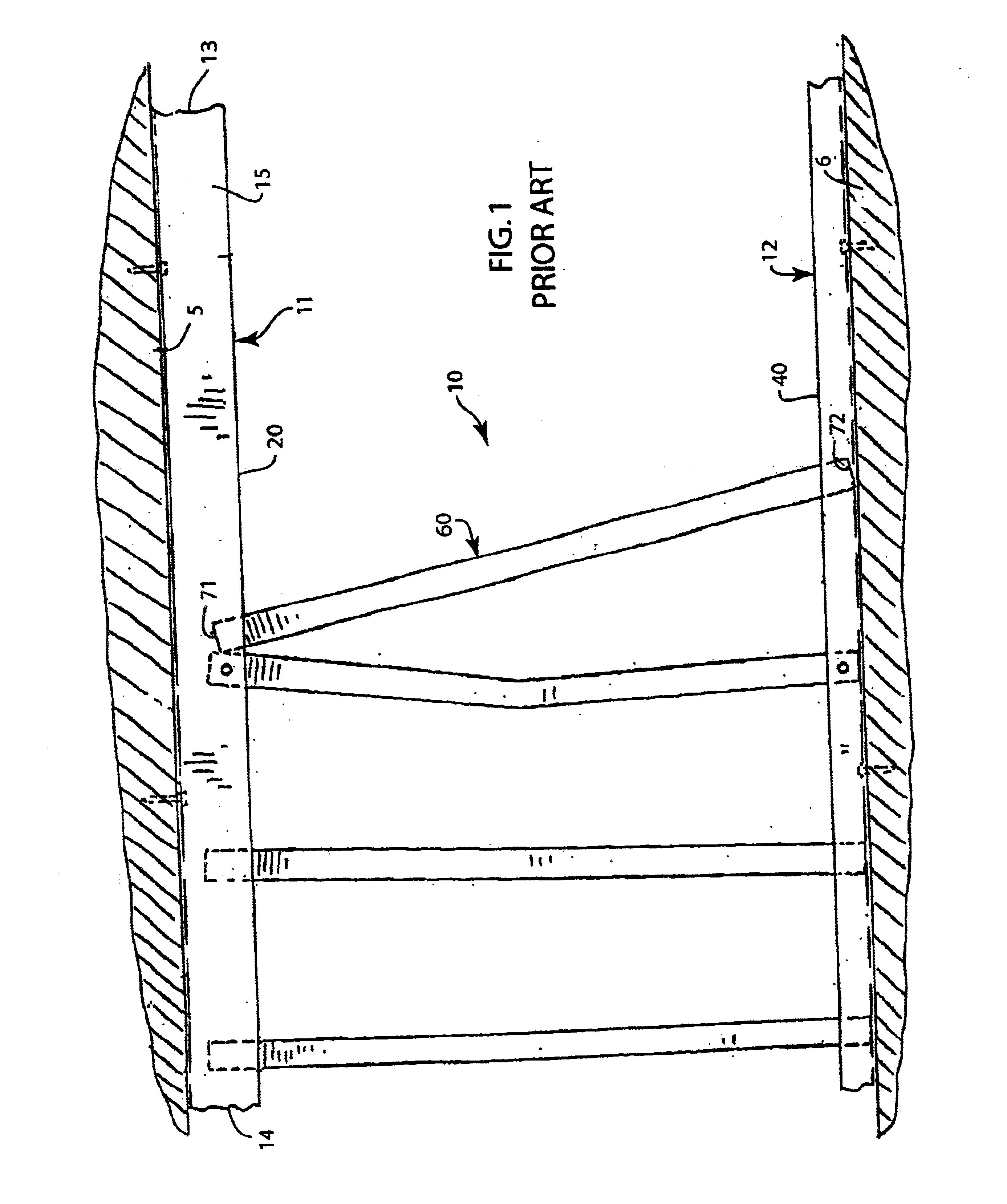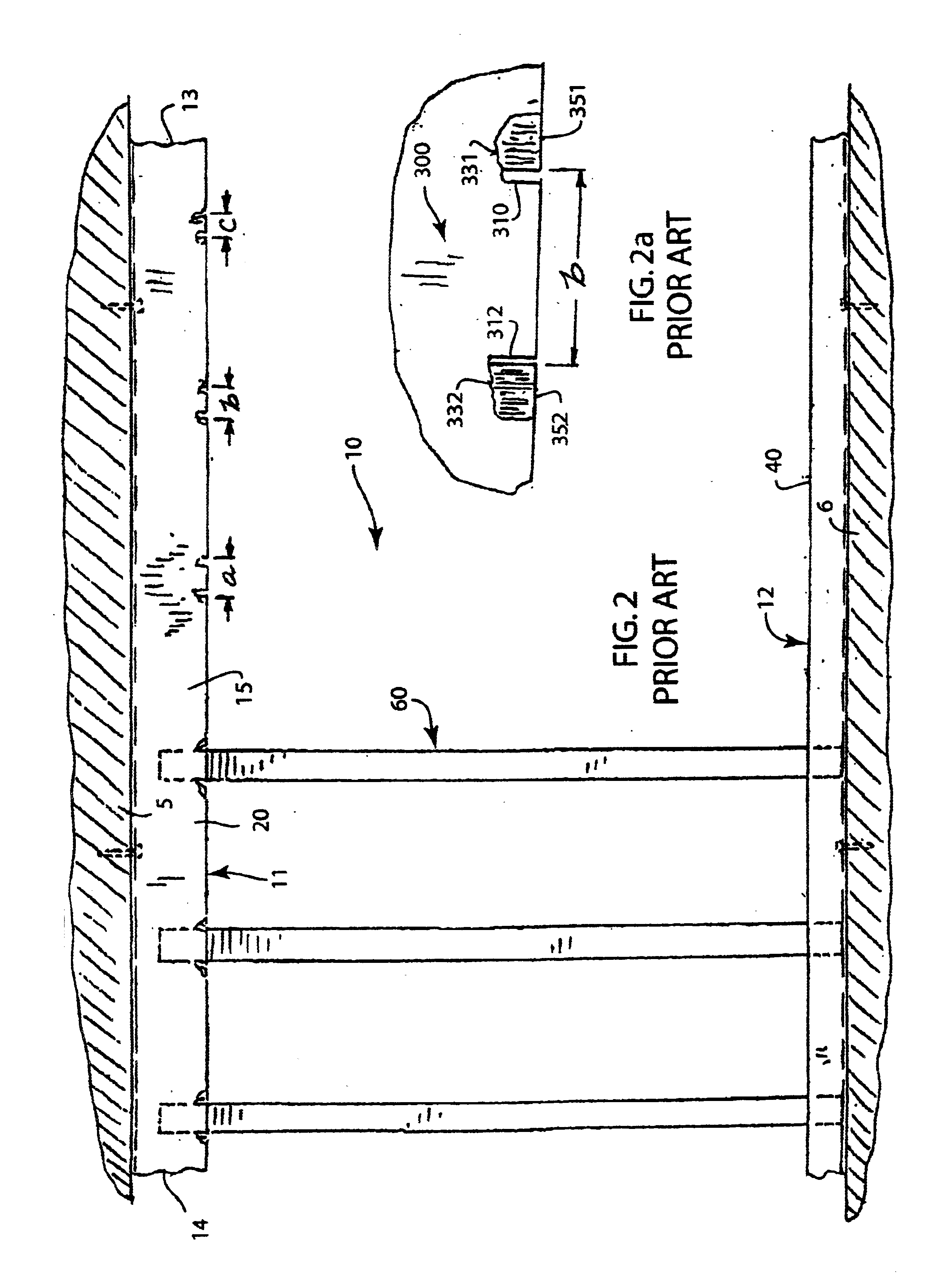Tool for shaping a workpiece
a tool and workpiece technology, applied in the field of slot forming tools, can solve the problems of inadvertent bumping or intentionally moving of the studs from their intended positions, bending, and difficulty in movemen
- Summary
- Abstract
- Description
- Claims
- Application Information
AI Technical Summary
Benefits of technology
Problems solved by technology
Method used
Image
Examples
Embodiment Construction
The present invention relates to a slot-forming tool for forming a number of consistently sized and shaped slots in a channel of a wall frame. Each slot aligns and slidingly supports a vertical stud that is snap-fit in place during an intermediate stage of constructing a wall. The tool has an arm for aligning the tool against the channel and a pivotally connected arm that is stroked to form the slot in the channel. Each arm has a gripping portion, an intermediate connecting portion and a working portion. The working portion of the alignment arm includes a cutting block with a face and two spaced sidewalls that form a pair of cutting edges. The working portion of the pivoting arm includes a pair of spaced knives. Each knife has a ramp or wedge shaped blade with a cutting edge that is aligned to shearingly engage one of the cutting edges of the cutting block and slide down the sidewall of the cutting block a predetermined distance. During use, the arms are pivoted apart to an open pos...
PUM
| Property | Measurement | Unit |
|---|---|---|
| Angle | aaaaa | aaaaa |
| Thickness | aaaaa | aaaaa |
| Shape | aaaaa | aaaaa |
Abstract
Description
Claims
Application Information
 Login to View More
Login to View More - R&D
- Intellectual Property
- Life Sciences
- Materials
- Tech Scout
- Unparalleled Data Quality
- Higher Quality Content
- 60% Fewer Hallucinations
Browse by: Latest US Patents, China's latest patents, Technical Efficacy Thesaurus, Application Domain, Technology Topic, Popular Technical Reports.
© 2025 PatSnap. All rights reserved.Legal|Privacy policy|Modern Slavery Act Transparency Statement|Sitemap|About US| Contact US: help@patsnap.com



